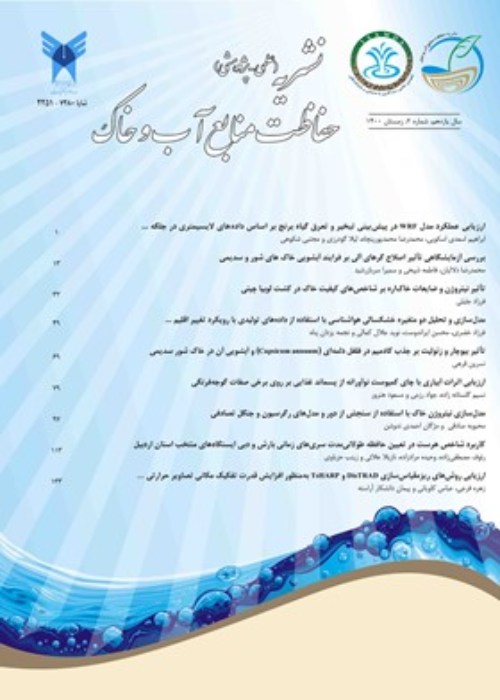Efficient and Sustainable Use of Water Resources in Khuzestan through Water Footprint Benchmarking
Anthropogenic water scarcity is among global concerns which threats the sustainability of the world in future. Overexploiting limited blue water resources for supplying human’s growing food demand is the main root of such a scarcity. Being still in its infancy, water footprint (WF) benchmarking is a proper method to determine the inefficient fraction of water consumption. Hence, we assessed if achieving benchmark levels can limit agricultural WF to its sustainable cap in Khuzestan province, which is the agricultural backbone of Iran.
The research consists of three stages including WF accounting, and sustainability and efficiency assessment. First, consumptive and degradative WFs were accounted for 32 in counties of Khuzestan province over the period 1986-2016. Green and blue WFs were accounted by dividing green and blue evapotranspiration by crop’s yield, respectively. The AquaCrop model was used to simulate daily evapotranspiration, and then, seasonal values were estimated by aggregating daily values. Grey WF was estimated for the applied nitrogen fertilizer in croplands. In the next stage, the sustainability status of water consumption pattern was assessed by dividing overall blue WF by blue water availability. The latter was estimated by subtracting environmental flow requirements from natural runoff. Thereafter, WF benchmarks were extracted for 10th, 25th, and 50th level of crop production, and based on which, the inefficient fractions of blue WFs were estimated for individual crops. Finally, inefficient blue WFs were compared with unsustainable ones to know if achieving benchmark levels can limit agricultural blue water consumption to its sustainable caps in the study area. A correlation assessment was also done to determine the main roots of inefficiency in Khuzestan province.
Along with a 63% increase in crop production and 53 increase in unit blue WF, the overall blue WF increased by 80% over the study period. Such an increasing pattern caused groundwater overexploitation with an annual average rate of 12 million m3 y-1. The contribution of green WF in consumptive WF decreased from 60% in 1986 to 48% in 2016. Overall grey WF, however, followed a decreasing trend, with an average annual decreasing slope of 140 m3 ha-1 y-1, which mainly occurred by a considerable reduction in cash crop’s grey WF. In 2016, a total of 0.98 billion m3 of blue water was consumed unsustainably, which was roughly 85% higher than one in 1986. The number of countries with unsustainable water consumption also increased from 2 counties in 1986, to 9 counties in 2016. Stable crops had the largest contribution in unsustainable WF. Based on the results of efficiency assessment, and considering WF benchmarks developed at 25th of crop production level, inefficient blue WF varies in the range of 0.26 to 606 million m3 y-1 in different counties in 2016. Compared with 1986, the inefficiency increased by 10-3860 m3 ha-1 in 16 counties in 2016. While achieving benchmark levels can reduce blue WF to its sustainable level at provincial scale, unsustainable blue WFs in Andimeshk and Ramshir counties are still 6.8 and 340.9 million m3 higher than the inefficient blue WFs, respectively. The correlation assessment showed that inefficiency increase along with any increase in added value by agricultural production and/or export, unit blue WF, blue water scarcity level, and access to groundwater consumption; while it decreases with any increase in the number of employees per ha, crop yield, and cash crop’s harvested area.
WF assessment showed that crop production in Khuzestan province is done at the cost of deteriorating environment, which threats the stability of agricultural system in near future. While achieving benchmark levels helps with being limited to sustainable WF caps through removing inefficient blue WF fractions, there are still the risk of unsustainability in some regions, which indicates the importance of high-resolution assessments for determining hotspots. Hence, further research is required to determine temporal hotspots as well, in order to implement a proper sustainable development plans.
- حق عضویت دریافتی صرف حمایت از نشریات عضو و نگهداری، تکمیل و توسعه مگیران میشود.
- پرداخت حق اشتراک و دانلود مقالات اجازه بازنشر آن در سایر رسانههای چاپی و دیجیتال را به کاربر نمیدهد.


